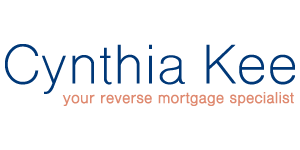Older Americans Rejected for a Mortgage May Qualify for a HECM
"People will come and go in life, but the person in the mirror will be there forever: so be good to yourself."
- Unknown
More Americans are seeing their mortgage or loan applications denied as banks accelerate their credit tightening to reduce their risk exposure. The Survey of Consumer Expectations survey conducted by the Federal Reserve found the overall rejection rate for credit applications jumped to 21.8% in June, up substantially from 17.3% in February, and that trend may accelerate should the economy slip into a recession. We discussed this trend at length in a July 24th episodeof our weekly video series The Industry Leader Update.
With Americans more likely to not qualify for a traditional mortgage loan, how many older Americans in this cohort would potentially qualify for a Home Equity Conversion Mortgage?
The answer to that pivotal question may be found in an academic study authored by Christopher Mayer, and Stephanie Moulton, entitled The Market or Reverse Mortgages among Older Americans.
5 Key Takeaways from Chapter 13
Older traditional mortgage borrowers are taking on significant debtwith an average LTV (loan-to-value ratio) of 55 percent for HELOCs or second mortgages, to an LTV of 78 percent for purchase mortgage loan transactions.
HECM reverse mortgage rates are similar to those found in traditional cash-out refinance and traditional mortgage loans. (Note: this study was published in February 2022).
Reverse mortgage demographics are unique in that reverse mortgage borrowers are almost twice as likely to be women (40%) when compared to older traditional mortgage borrowers.
Only 17-27% of older borrowers rejected for a traditional mortgage loan would qualify for a HECM depending on interest rates and closing costs. Though a seemingly small percentage, this represents 301,000 to 460,000 potential borrowers.
The majority of rejected borrowers had very high DTI (debt-to-income) ratios with 71 percent of rejected borrowers, and 40 percent of actual borrowers having a DTI over 36%.
This study highlights that the potentially-qualified HECM borrowers who were previously rejected for a traditional mortgage loan represent 2.6 to 3.9 times the actual number of reverse mortgage borrowers.
One would think that retirees would be inclined to spend their wealth in retirement. However, many do not for varying reasons one of which is to hold onto assets as a precautionary hedge against unexpected expenses such as healthcare, or long-term care. Another reason retirees don’t tap into their home’s value is many homeowners expect to be able to access their equity when a financial shock occurs. That’s a risky proposition as evolving borrowing standards and interest rates may thwart their ability to do so.
While much has changed since the publication of this study, the underlying forces pressuring older homeowners have not. Now may be the ideal moment to form an alliance with local mortgage professionals who are unable to qualify their older mortgage applicants and provide an alternative.
How Could Eliminating Your Mortgage Payment Change Your Life?
No Mortgage Payments, Tax-Free Money, Bills Paid & Cash on Hand!
Contact Cynthia today by clicking the link below to learn more about Reverse Mortgage benefits. Worry Less. Live More.



